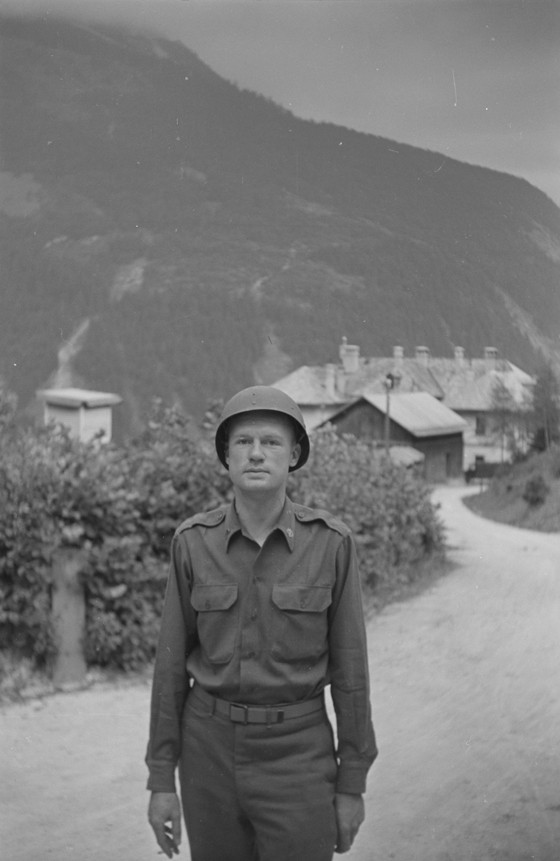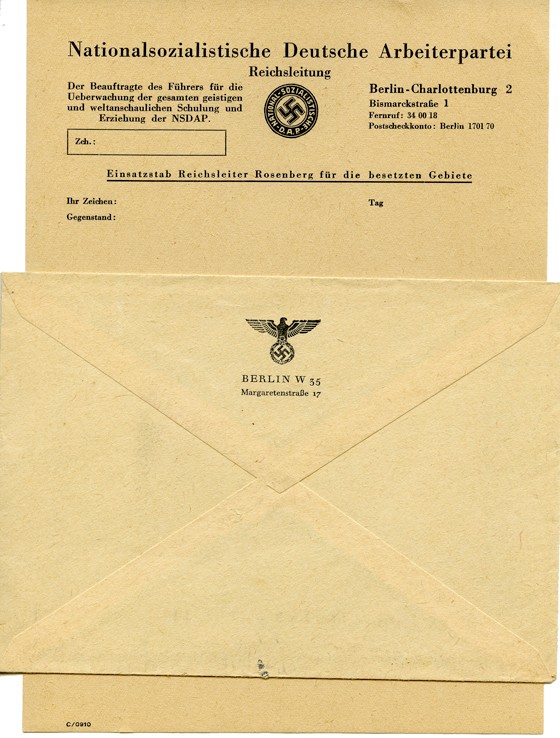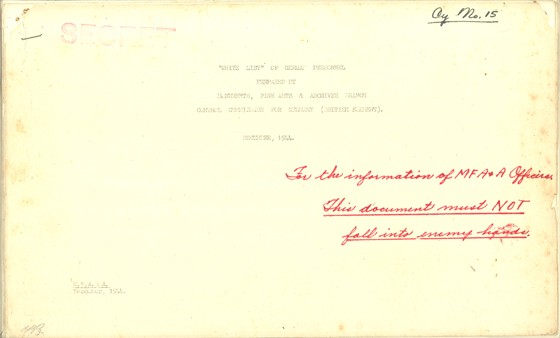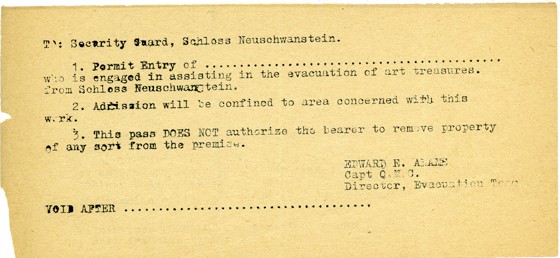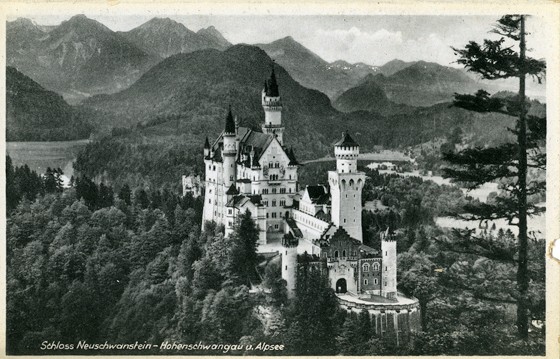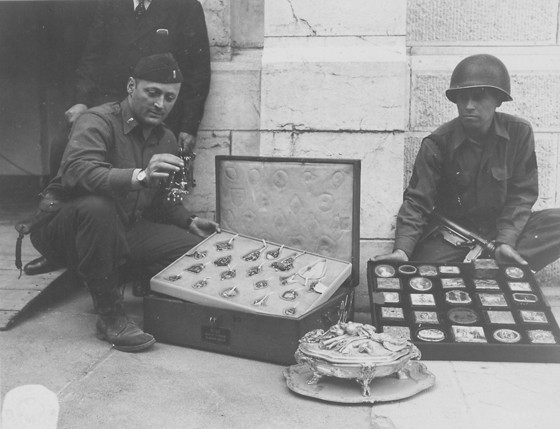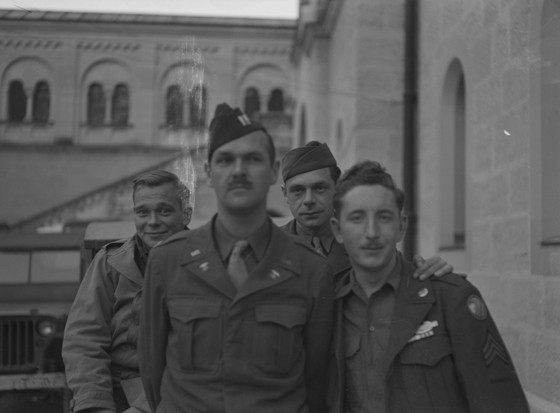The Monuments Men
and the National Gallery of Art
IV. Loot and Treasure
Advancing into Germany with American troops, monuments officers soon began to discover places where valuable art and antiquities, libraries, and archives had been hidden by the Nazis. The existence of these repositories had long been suspected, but their scope proved to be astonishing. Over time, more than 1,000 storage sites were discovered; some were small but others sheltered great accumulations of art from occupied nations. Monuments men were responsible for securing and caring for these treasures.
Lieutenant Lamont Moore, Altaussee, Austria, 1945. Charles Parkhurst Papers
Lieutenant Lamont Moore was the Ninth US Army MFAA officer in charge of evacuation of looted art from the iron mine at Hüttenweg near Siegen, the first vast Nazi storehouse discovered in Germany. Before the war, Moore was curator of education at the National Gallery of Art and in 1946 returned to that position.
ERR embroidered armband. Charles Parkhurst Papers
Armbands such as this were sewn to the brown uniforms of ERR soldiers.
Stationery of the Nazi art-looting organization Einsatzstab Reichsleiter Rosenberg (ERR), probably found at Schloss Neuschwanstein. Charles Parkhurst Papers
While preparing to enter Germany, British monuments staff prepared a “White List” of anti-Nazi German art museum and archives personnel who could be expected to help the monuments officers. The report was classified, as the identified individuals would be in danger if the document fell into enemy hands. Charles Parkhurst Papers
Paper permits, as shown here, were used by monuments officers to control access to Schloss Neuschwanstein and other Nazi storage sites, which were filled with portable objects of great value. Edward Adams Papers
ERR headquarters at Schloss Neuschwanstein held one of the greatest accumulations of art looted from Jewish collections in France. The fantastic castle had been built by King Ludwig II of Bavaria
(1845 – 1886). James Rorimer Papers
Captain James Rorimer (left) at Schloss Neuschwanstein with objects looted from the Maurice Rothschild collection, 1945. Charles Parkhurst Papers
Captain Edward Adams (second from left) with monuments team at Schloss Neuschwanstein. Charles Parkhurst Papers
One of the chief tasks facing the monuments officers in Germany was to find adequate manpower to protect treasures in military possession. Other officers, enlisted men, and civilians provided important aid. Captain Adams was chief of the evacuation team at the castle.
Next > V. Sanctuaries for Art
